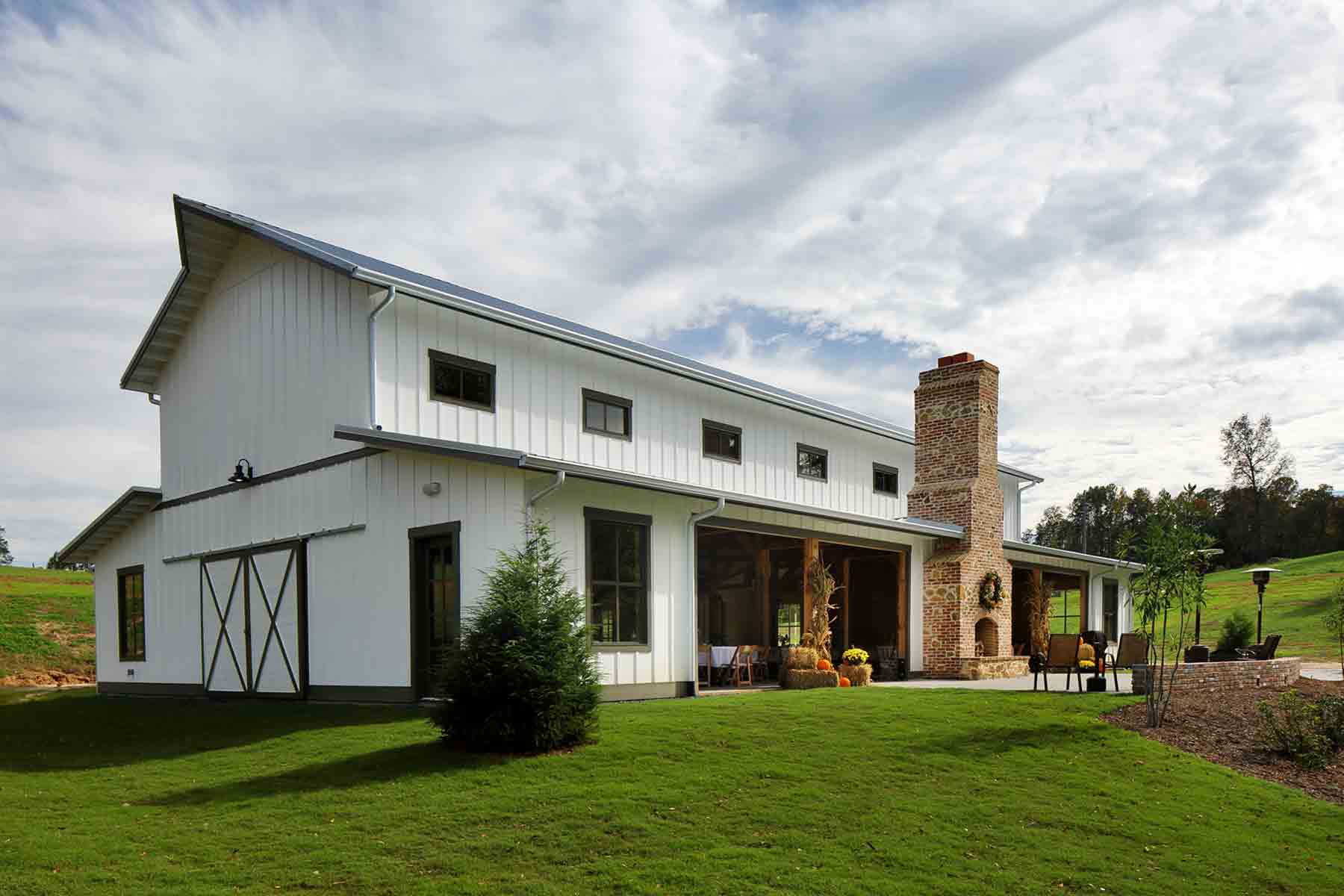Barndominiums Vs. Standard Homes: an In-depth Comparison of Way Of Living and Functionality
The choice between barndominiums and typical homes includes different factors, including lifestyle preferences and functional needs. Barndominiums are defined by their open formats and adaptability, often attracting those who prioritize communal living and versatility. On the other hand, traditional homes use a more organized environment, which may better offer households seeking personal privacy and a feeling of background. As we check out the price effects and environmental factors to consider, it comes to be clear that the option prolongs past mere aesthetics and functionality; it welcomes a much deeper exploration of what genuinely specifies a home.
Introduction of Barndominiums
Barndominiums, an unique housing pattern gaining popularity across various regions, blend the rustic beauty of barn-style architecture with the performance of modern-day home. These unique frameworks usually include a metal or wood structure, combining open floor plans and high ceilings with energy-efficient features. Commonly situated on expansive country homes, barndominiums provide home owners the opportunity to delight in a peaceful way of life while providing sufficient space for numerous tasks.
The flexibility of barndominiums prolongs beyond their visual allure; they can function as both living quarters and practical rooms for leisure activities, workshops, and even little businesses. Their adaptive design enables very easy customization, accommodating varied household demands and choices. Lots of proprietors appreciate the reduced maintenance demands related to metal exterior siding and roofing, contributing to lasting toughness.

Characteristics of Traditional Residences
Stressing timeless layout and comfort, typical homes are characterized by their unique architectural designs, which usually mirror historical impacts and local aesthetics. Usual functions consist of in proportion exteriors, gabled roofing systems, and an emphasis on workmanship, leading to a cozy and inviting environment.
Traditional homes often integrate aspects such as crown molding, wainscoting, and wood flooring, boosting their classic charm. They generally include several areas with defined objectives, advertising family members communication while permitting privacy. learn more. The format frequently includes official living and dining areas, which are conducive to enjoyable visitors and hosting family celebrations
Exterior products such as block, timber, or rock are frequently used, contributing to sturdiness and a sense of durability. Barndominium builder. In addition, several traditional homes are made with front porches or stoops, promoting a feeling of neighborhood and connection with the community
Landscaping plays a substantial role in typical home layout, with properly maintained gardens and pathways that enhance visual charm - click here to view. Overall, traditional homes personify a feeling of nostalgia and security, attracting those that value heritage and a much more structured living atmosphere
Expense Contrast
Typically, an expense comparison in between barndominiums and typical homes reveals significant differences in building and construction expenses and overall financial investment. Barndominiums, commonly built from steel or steel frames, typically incur lower product and labor expenses than standard homes built from wood and block. The streamlined design of barndominiums can translate to reduced building and construction times, even more lowering labor prices and quickening occupancy.
Generally, the price per square foot for a barndominium ranges from $100 to $150, while typical homes can vary extensively, normally dropping between $150 and $300 per square foot, depending on location, products, and layout complexity. This expense difference makes barndominiums an attractive alternative for budget-conscious customers looking for larger space without compromising high quality.
Furthermore, barndominiums may result in lasting cost savings with reduced upkeep costs, energy performance, and insurance coverage rates. Their resilient building and construction materials typically need less maintenance over time contrasted to traditional homes. It is crucial to consider that while initial costs might be reduced for barndominiums, the final financial investment will also depend on specific modification and desired features, which can affect the overall cost in both real estate kinds.
Way Of Life and Area Considerations
When considering lifestyle and room, barndominiums use a distinct flexibility that allures to a variety of homeowners. These hybrid frameworks integrate domestic coping with functional space, frequently including open flooring plans that can be adapted to match private requirements. This versatility is especially useful for families or people seeking a tailored living environment, permitting varied uses such as home workplaces, workshops, or entertainment locations.

In addition, the aesthetic charm of barndominiums can deal with both rustic and contemporary preferences, making them a versatile website option for numerous layout preferences (Barndominium builder). Ultimately, the selection between a barndominium and a traditional home commonly pivots on exactly how well each choice straightens with the homeowner's lifestyle goals and spatial needs, highlighting the importance of thinking about personal concerns in the decision-making process
Environmental Influence and Sustainability
The environmental impact and sustainability of barndominiums present engaging benefits compared to typical homes. Mainly created from steel and various other sturdy products, barndominiums are commonly constructed utilizing recycled resources, reducing the demand for brand-new materials and reducing waste. Their style usually highlights open spaces, which can cause lower power intake for home heating and air conditioning compared to conventional homes with even more segmented formats.
In addition, barndominiums can include sustainable features such as photovoltaic panels, rainwater harvesting systems, and progressed insulation strategies, enhancing their power performance. The adaptability of their style allows house owners to integrate these technologies much more seamlessly than in lots of typical homes, which might call for substantial retrofitting.
Furthermore, barndominiums typically require fewer sources for construction as a result of their easier, much more reliable designs. This not only lowers the carbon footprint connected with building but also adds to an extra sustainable lifestyle. In comparison, conventional homes might entail higher degrees of power expense and resource utilize throughout their lifecycle, from building and construction to upkeep. In general, barndominiums stand for a forward-thinking approach to lasting living, lining up with modern ecological top priorities.
Final Thought
In recap, the choice between barndominiums and conventional homes hinges on specific lifestyle preferences and useful requirements. Barndominiums, with their open formats and sustainable materials, provide to those looking for adaptability and public living.